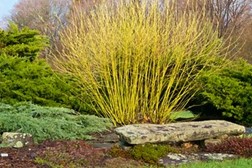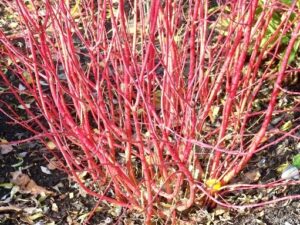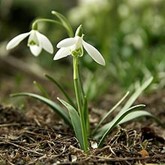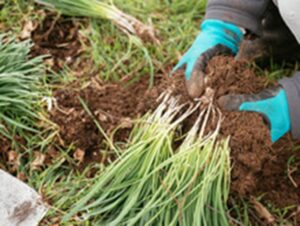Spring usually arrives by mid-March and the frequent sunny days provide the opportunity for an increasing range of gardening tasks. It’s time to get busy sowing seed, cutting back winter shrubs and generally tidying up around the garden. However, remember we are not usually guaranteed frost free till mid-May in our part of the world!
Shrub Border
- Early March is a good time of the year to have a handy pair of secateurs in your pocket.
- Buddleia, Hydrangea and some of the Winter flowering shrubs that have finished flowering can be pruned now.
- Late March is a good time to carry out pruning on Evergreen shrubs that may have suffered frost damage such as Hebes with the young growing tips scorched by frost.
- All rose pruning should be completed by mid-March. Start spraying them with fungicide to ward against black spot and mildew. Repeat every fortnight until the autumn. Remember that if an infection sets in, all the affected leaves must be burnt – do not leave them on the compost heap as this will become the perfect incubation site.
- Feed acid loving plants such as camellias and rhododendrons with ericaceous feed if you are on neutral or alkaline soil. A dose of sequestered iron also helps prevent the leaves turning yellow.
- Cut back Cornus (dogwood) and Salix (willow) grown for colourful winter stems.


Lawns
- Work on the lawn really begins this month. As soon as the grass has started to grow and the weather and ground conditions are favourable, rake the lawn to remove leaves and surface rubbish.
- Do not rake too vigorously at this stage or you may damage the grass.
- The first cut should just remove the top of the grass…close cutting at this stage will result in the grass yellowing. Choose a day when the surface of the lawn is dry.
- Due to the excessive wet conditions we have experienced this past winter, many lawns have been saturated for long periods of time, particularly on heavy clay soils…the end result is lots of moss.
- It is the time to apply the first moss kill of the season – read the instructions on the packaging carefully before treating your lawn. Choose a period in the month when the weather is mild, when the grass is dry and frost free.
- Avoid mowing the lawn three days before and at least four days after treatment. You may have to retreat the lawn in four to six weeks time to eradicate all the moss.
- It is important not to get any “Moss Killing Chemical” on to any shrubs or tender plants planted in borders around the lawn.
- Do not compost grass clippings from the first cut of the lawn following any form of chemical weed or moss control treatment.
Herbaceous Border
- Unlike so many bulbous rooted plants, Snowdrops can be lifted and divided as soon as the flowers fade. It is advisable to lift and replant in this way every few years. If the bulbs are too closely packed together, many may fail to flower in future years.


- A large variety of young herbaceous plants are now available in garden centres and can be a very cost-effective way of planting up a border for the future.
- As you will have noticed, many weeds are the first thing to come back into growth and will quickly dominate the soil surface. Best to remove them regularly whilst still small, before they get out of hand!
- Top dress containers with fresh compost. Pots and tubs benefit from topping up with fresh John Innes compost. Old compost can be removed and replaced with new if there is not much room for topping up.
- Lesson for Beginners – Annuals are flowers which complete their entire life cycle from seed to last blooms in one season. They are not hardy enough to make it through the winter months and need to be replanted in the spring. Perennials are flowers that are planted once and come back year after year. In one season, they grow, bloom and go dormant. In the autumn, plants can be cut back, and will start again in spring from the previous root system.
Fruit Garden
- Plums and Damsons will now be coming into flower this month. Peach, Nectarines and Apricot trees growing on walls will also come into flower now.
- At this time of year there are few insects flying about so hand pollination with a small artist’s paint brush will aid pollination and lead to a bigger fruit yield, simply brush the pollen from one flower to another.
- Raspberries will benefit from a mulch of well-rotted manure not only to feed the plants but also protect the roots and keep them moist.
- As Apples, Pears and Plums come into leaf watch for the first signs of insect damage, spray as soon as pests appear.
- It is very important not to spray any insecticide or fungicide whilst fruit trees are in flower, wait until flowering has finished.
Vegetable Garden
- The work really begins now with early sowings of onions, parsnips and broad beans direct into the garden.
- Broad beans and peas that have been sown in pots in the greenhouse or frame should be hardened off now before planting out.
- Towards the end of the month carrots, turnips, radish and lettuce can be sown.
The Garden Pond
- As the weather warms up begin to feed your fish.
- March is the last month in which you can clean out your pond.
- Divide and repot large established pond plants before they come into growth.
